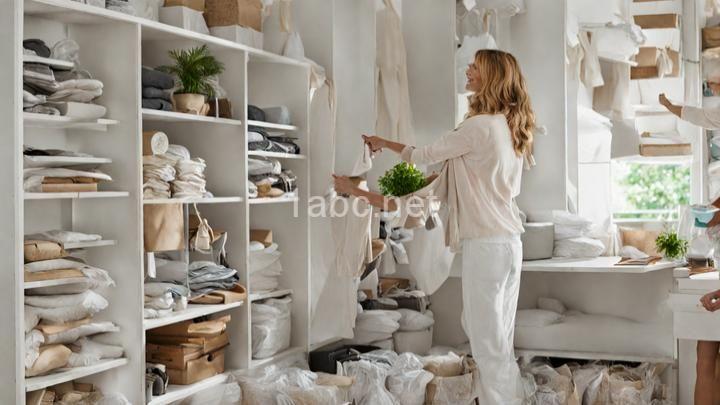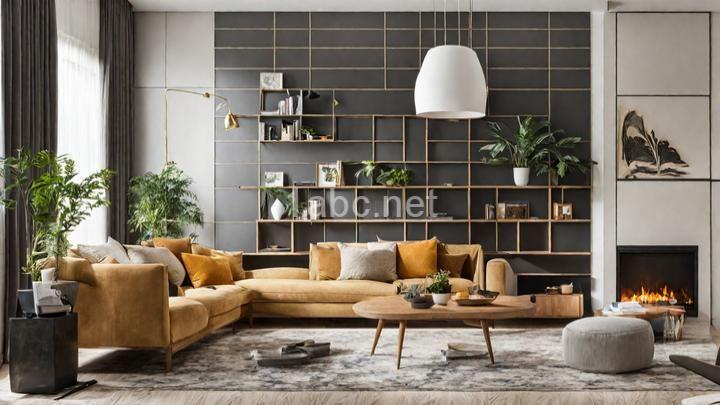The Art of Decluttering: Organizing Tips for Every Room

Introduction:
Welcome readers to the blog post on the art of decluttering and organizing. In today's fast-paced world, maintaining an organized space has become essential for our physical and mental well-being. In this blog post, we will explore the importance of decluttering, offer general tips to get started, and provide specific strategies for organizing each room in your home. By the end of this article, you will be equipped with the knowledge and inspiration to create a clutter-free space that promotes productivity, relaxation, and overall happiness.
Importance of Decluttering:
The first point we need to address is the negative impact clutter can have on our lives. Research has shown that living in a cluttered environment can lead to increased stress levels and feelings of overwhelm. Clutter affects our ability to focus, reduces productivity, and even hinders creativity. Furthermore, clutter is a breeding ground for dust, allergens, and bacteria, which can have detrimental effects on our physical health. By decluttering, we not only create a visually appealing space but also enhance our overall well-being.
Getting Started: General Tips for Decluttering:
To embark on your decluttering journey, it is important to set aside dedicated time for this task. Depending on the size of your home and the amount of clutter, you may need several days or even weeks to complete the process. Start small by selecting a specific area or task to build momentum. This could be a drawer, a closet, or a corner of a room. By accomplishing small decluttering tasks, you will feel motivated to tackle larger areas.
As you begin sorting through your belongings, create categories for items: keep, donate, and discard. Be honest with yourself and let go of items that no longer serve a purpose or bring you joy. Remember, decluttering is not about getting rid of everything but rather creating space for the things that truly matter.
When decluttering, it is important to make decisions quickly. Overthinking can lead to indecision and ultimately, feeling overwhelmed. Trust your instincts and let go of items that are no longer useful or meaningful to you. By making swift decisions, you will be able to move through the decluttering process efficiently.
Decluttering Room by Room:
A. Living Room:
The living room is often the heart of the home, where we unwind, entertain guests, and spend quality time with family. To keep this space organized, start by organizing entertainment centers and bookshelves. Use storage baskets or bins to group similar items such as DVDs, remote controls, and gaming accessories. Consider investing in furniture with built-in storage to keep the room clutter-free.
Managing electronic cords and cables is another challenge in the living room. Use cable management solutions to keep cords organized and out of sight. Labeling cords with colored tape or tags can also help identify which cord belongs to which device.
Toys, magazines, and other common items often find their way into the living room. Create designated storage solutions for these items, such as toy bins or magazine holders. Encourage family members to put away their belongings after use to maintain an organized living room.
B. Bedroom:
The bedroom should be a peaceful sanctuary where we can relax and recharge. Start decluttering by going through your clothing. Separate items into categories such as tops, bottoms, dresses, and outerwear. Consider implementing a seasonal wardrobe rotation to keep your closet clutter-free. Store out-of-season clothing in vacuum-sealed bags or under-bed storage containers.
Accessories like jewelry, belts, and scarves can easily become tangled and disorganized. Invest in jewelry organizers, belt hangers, and scarf racks to keep these items easily accessible and untangled. Utilize the space under your bed or invest in storage ottomans to maximize storage in a small bedroom.
C. Kitchen:
The kitchen is the heart of the home, but it can quickly become cluttered with utensils, gadgets, and food items. Start by decluttering kitchen cabinets, drawers, and the pantry. Remove expired food, donate duplicate items, and discard items that are no longer usable. Group similar items together and use storage containers or organizers to keep everything in its place.
Organizing cooking utensils, pots, pans, and food containers can be a challenge. Utilize drawer dividers, pot lid racks, and stackable containers to make the most of your kitchen storage space. Create designated zones within your kitchen, such as a baking zone, cooking zone, and snack zone, to maximize efficiency and ease of use.
D. Bathroom:
The bathroom is a space where we start and end our days, and it should feel clean and organized. Declutter toiletries, expired medications, and old towels or linens. Dispose of medications properly and donate towels or linens that are no longer in good condition.
Organize bathroom essentials such as makeup and hair products by using drawer organizers, clear containers, and shelves. Utilize vertical space by installing shelves or hanging baskets for additional storage. In a small bathroom, consider adding wall-mounted storage solutions or over-the-door organizers to make the most of limited space.
E. Home Office:
As more people work from home, it is crucial to create an organized and clutter-free home office space. Start by decluttering paperwork and organizing important documents. Invest in a filing cabinet or file folder organizers to keep important papers easily accessible.
Managing cables and cords is essential in a home office setup. Use cable clips or cord organizers to keep cords neatly bundled and off the floor. Consider using a wireless keyboard and mouse to reduce cord clutter on your desk.
Create an ergonomic and clutter-free workspace by investing in desk organizers, pen holders, and storage containers. Keep only essential items on your desk and find homes for everything else. A clean and organized workspace will enhance your productivity and focus.
Maintaining an Organized Space:
Decluttering is not a one-time event; it is a lifelong process. To maintain an organized space, it is important to establish daily routines and systems. Spend a few minutes each day tidying up and returning items to their designated places. Implement a weekly or monthly deep cleaning and decluttering session to keep your space clutter-free.
Involving your family or roommates in maintaining an organized environment is crucial. Assign responsibilities and create a shared system for keeping common areas clutter-free. Encourage everyone to take ownership of their belongings and develop the habit of putting things away after use.
Conclusion:
Decluttering and organizing your home is a transformative process that brings numerous benefits. By creating a clutter-free space, you will experience reduced stress levels, increased productivity, and an overall sense of well-being. Remember, decluttering is a journey, so be patient with yourself and enjoy the process. Take action today and start decluttering your home, one room at a time. Your future self will thank you for it.
FREQUENTLY ASKED QUESTIONS
What is The Art of Decluttering: Organizing Tips for Every Room?
"The Art of Decluttering: Organizing Tips for Every Room" is a comprehensive guidebook that provides valuable tips and techniques for tidying up and organizing your living space. This resource offers practical advice on how to effectively declutter each room in your home, promoting a more organized and balanced lifestyle. From the kitchen and bathroom to the bedroom and home office, this guide covers various strategies for sorting, categorizing, and creating an easy-to-maintain system for your belongings. Whether you are looking to simplify your living space or seeking inspiration to maximize storage and minimize clutter, "The Art of Decluttering" is a helpful resource that can assist you in achieving an organized and stress-free home environment.
How can this content help me with decluttering and organizing?
This content can help you with decluttering and organizing by providing you with tips, strategies, and techniques to effectively declutter and organize your living space. It can offer guidance on how to sort through your belongings, make decisions about what to keep or let go of, and provide practical solutions for organizing different areas of your home. Additionally, it may offer insights into the benefits of decluttering and organizing, such as reducing stress, increasing productivity, and creating a more visually appealing and functional living environment.
Who is the target audience for this content?
The target audience for this content is anyone who is seeking information or support on various topics.
Are the organizing tips applicable to all types of rooms?
Yes, the organizing tips can be applied to all types of rooms. Whether it's a bedroom, a living room, a kitchen, or an office, the principles of organization remain the same. However, it's important to consider the specific needs and functions of each room when implementing the tips. For example, the organization of a kitchen may require specific considerations for storing cookware and food items, while an office may require organizing paperwork and office supplies.
